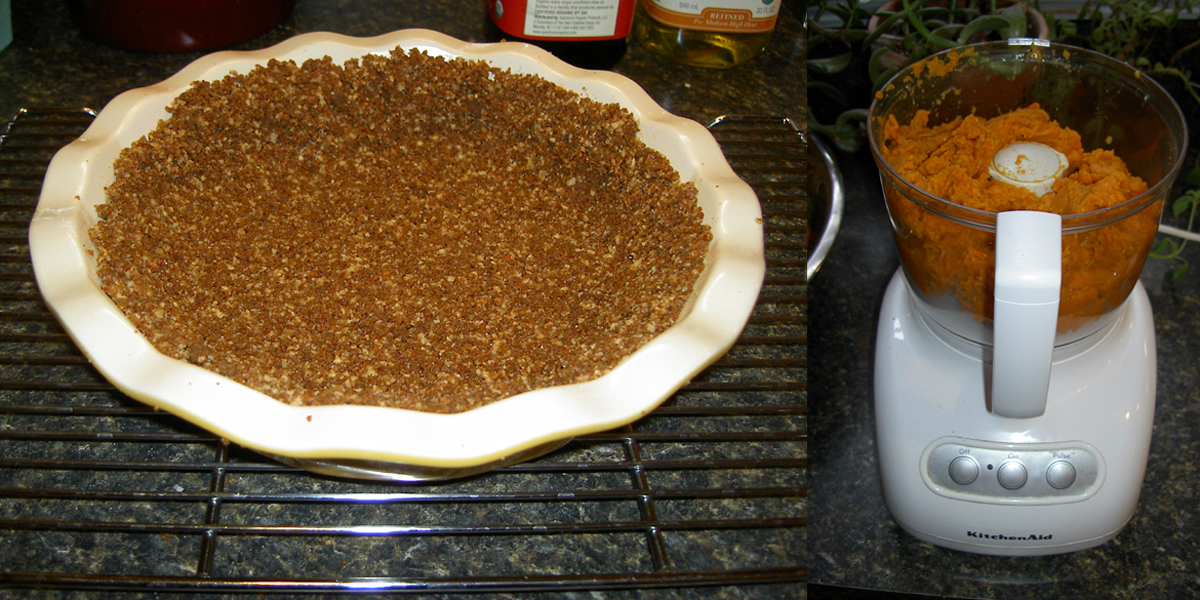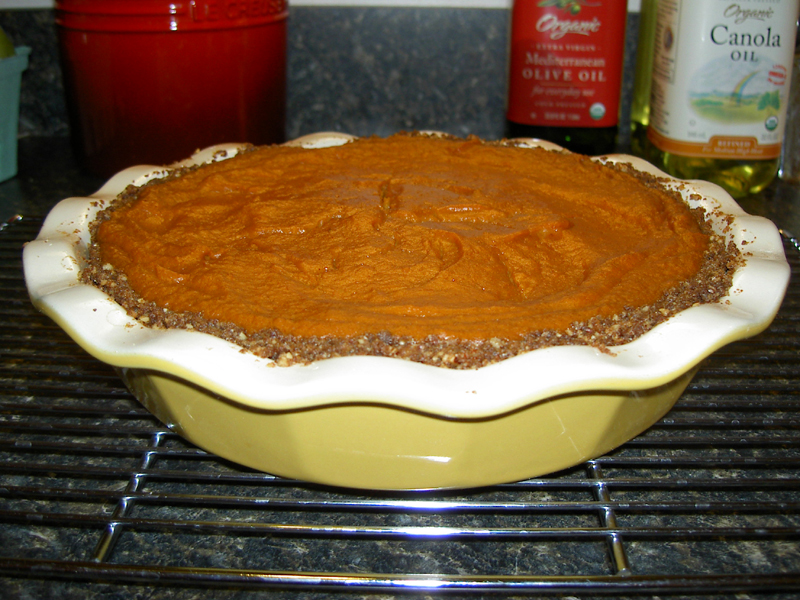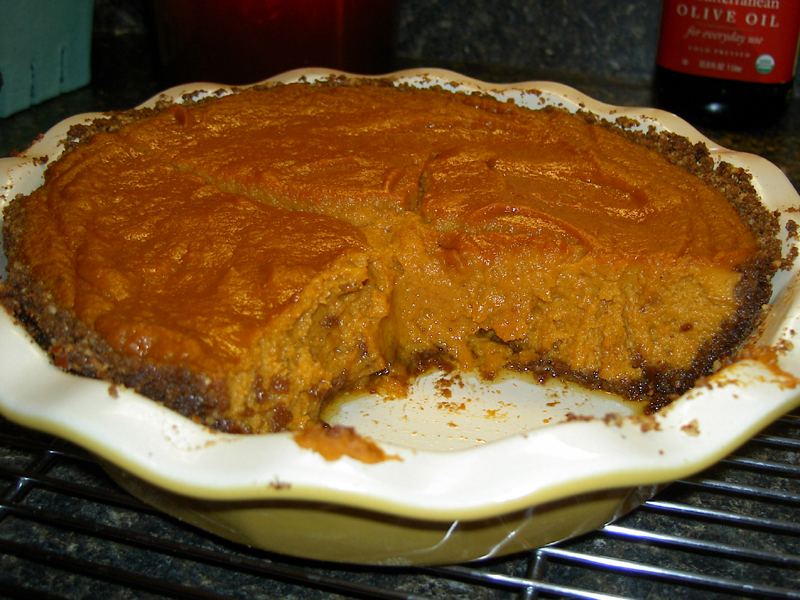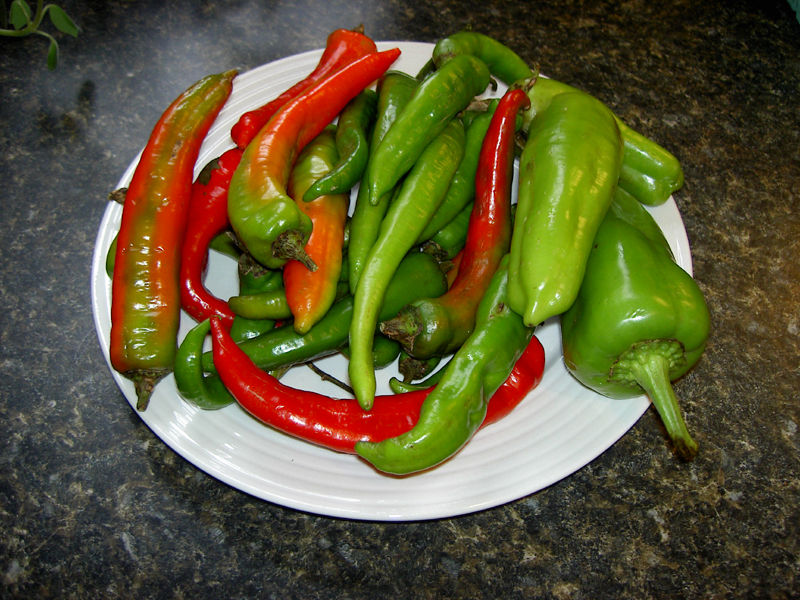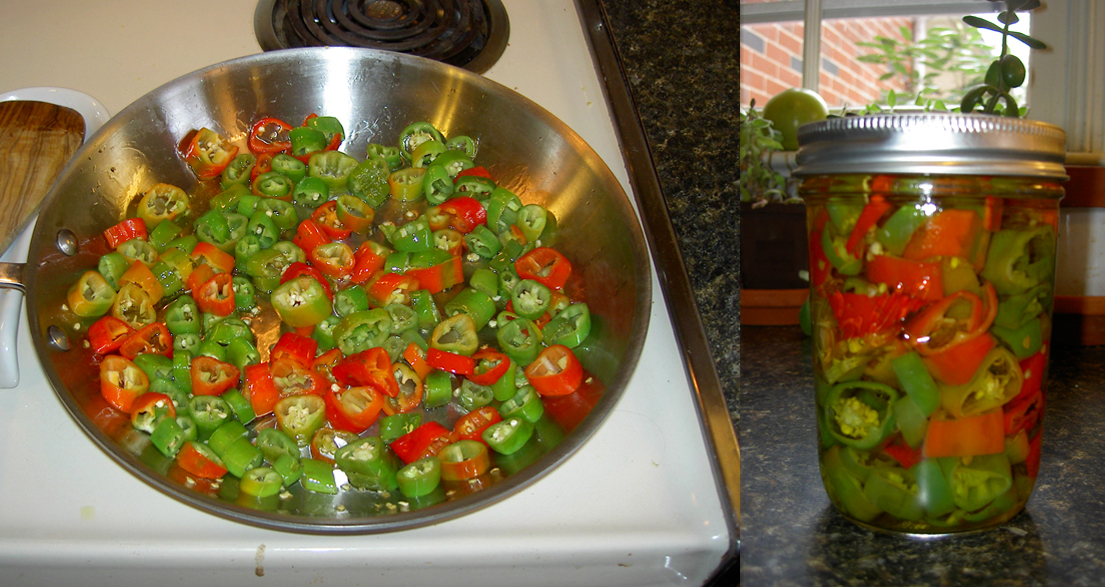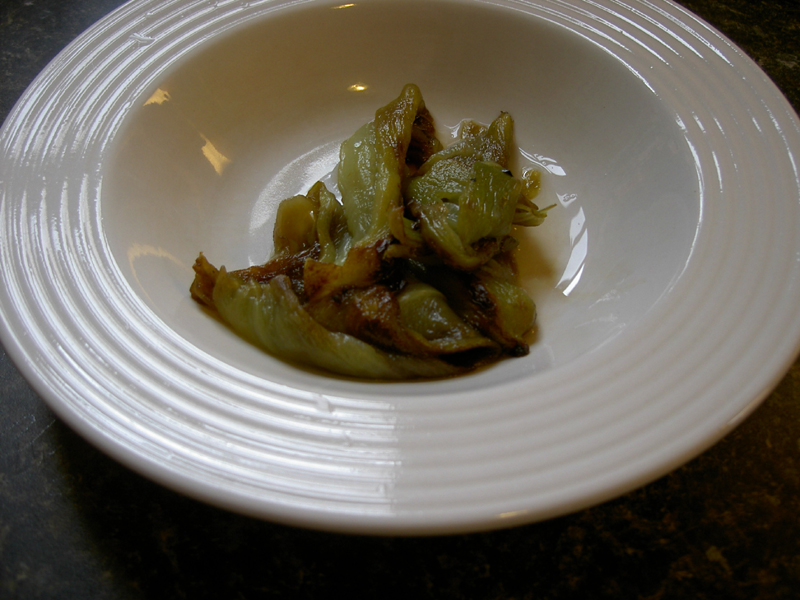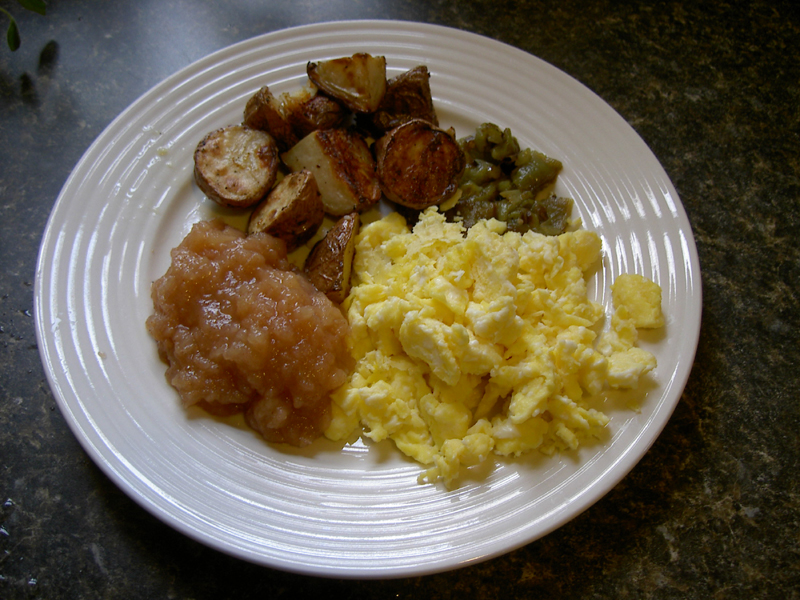For Week 2 of the Dark Days Challenge, I decided to make beef stew. This was a big step for a former vegetarian of 15 years: I had never before cooked beef of any kind, nor allowed it to be cooked in my house or my pans. It was really the last frontier meat-wise, as we’ve cooked pork, venison, chicken, turkey, and fish since I started eating meat again. While the chickens were sometimes roasted or baked, almost everything else was ground and made into sausages, stews, or pies; this was the first time I’d handled chunks of meat. Given all this weighty history, I wanted to use a recipe I knew would yield a good result, and the New York Times one fit the bill: how could you go wrong with 5 1/2 cups of wine and cognac?
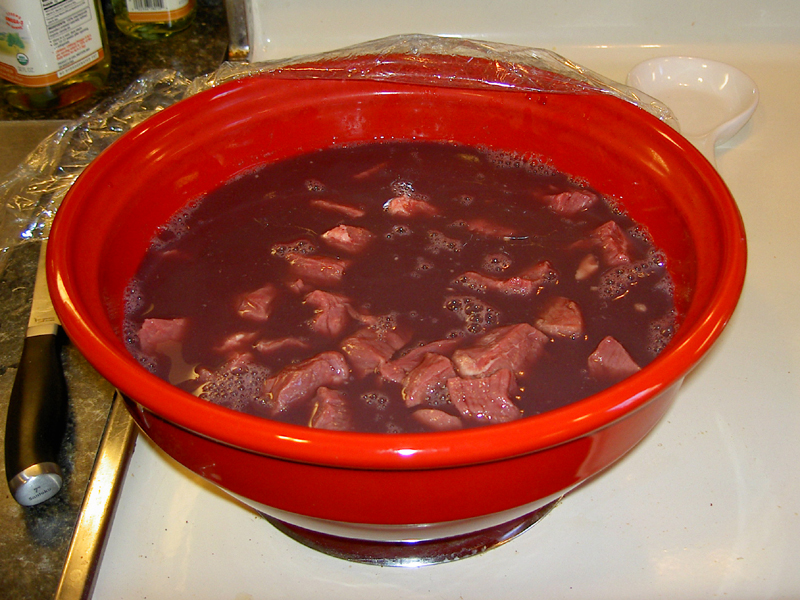
Day 1: beef, wine, and cognac.
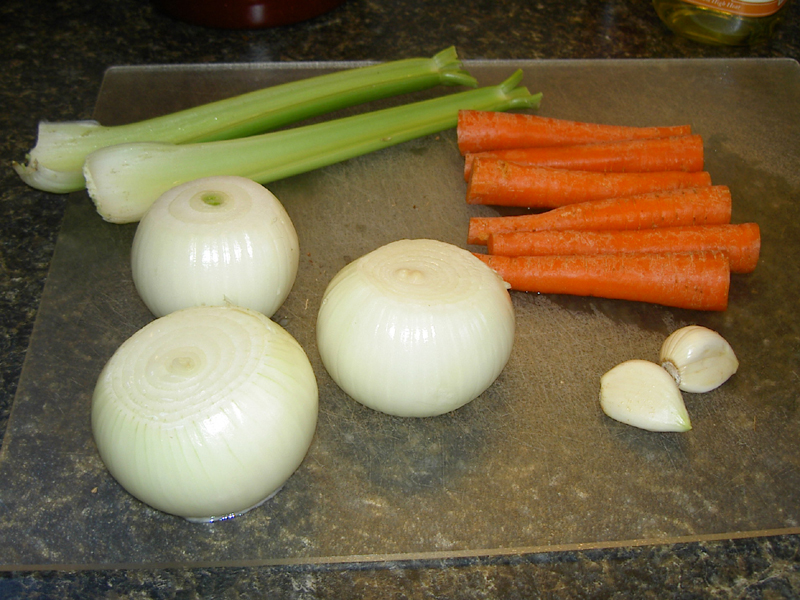
Day 1: vegetables.

Day 1: the whole shebang, combined and heading into the fridge for 24 hours.
Since I was using a fairly authentic French-style stew recipe, meal construction required two days. On day one, everything went into a bowl in the fridge and sat there for 24 hours. In this case, “everything” meant the (thankfully pre-chunked) stew beef from Smith Meadows, the chopped vegetables, and the spices. I was even required to make one of those little bags out of cheesecloth to hold cloves and peppercorns! Almost all of the vegetables were in our fridge from our CSA: onions, carrots, garlic, and mushrooms (which don’t come into play until day two). We had to buy celery and an orange; I considered leaving out the orange, as it really didn’t fit the requirements of the challenge at all (definitely not local, sustainable, or ethical, and I am quite sure it was also not organic since my partner picked it up from the Giant on the way home from the metro), but after all of the effort involved in assembling the stew I was pretty invested in seeing how the recipe came out. For the alcohol, I foraged in our house, which I consider to be a very local and sustainable way of obtaining ingredients. The wine was a Mondavi Pinot Noir that my mother-in-law brought down on a previous visit; the double bottle was just enough for the recipe with one glass left over for my partner to have with dinner, and the pinot seemed to meet the “like a cotes de Provence” guideline of the recipe. The cognac was one of those teeny bottles of Courvoisier that I had received in my stocking a couple of years ago, which was all I was able to turn up and also exactly the right amount (1/4 cup, in case you ever wondered how big those little bottles are). I did make a note that we are sadly lacking in the cognac department, although brandy, port, and scotch make fine after-dinner alternatives. So, on day one I combined the meat, wine, cognac, vegetables (except mushrooms), and spices in my biggest bowl and put it all in the fridge; this happened fairly slowly over the course of the morning, as I was working with the baby strapped to my front and during a brief nap time.
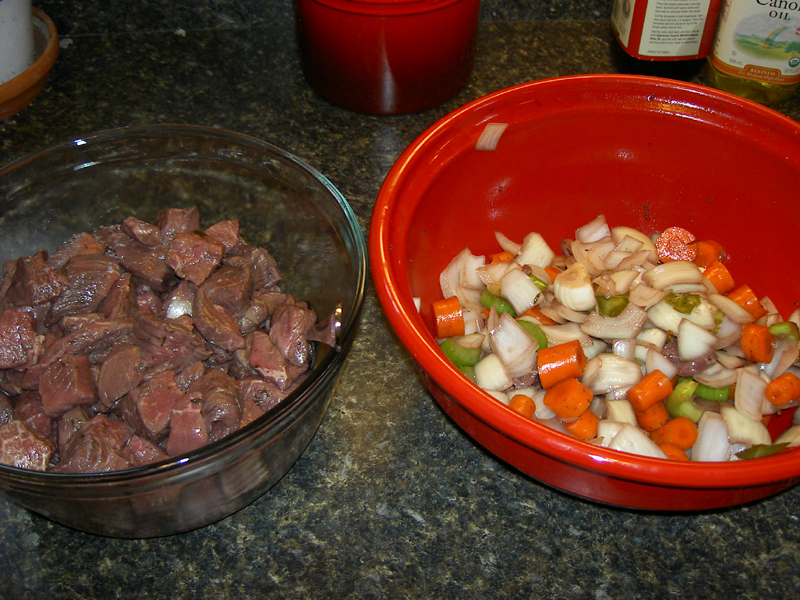
Day 2: meat and vegetables separated again.
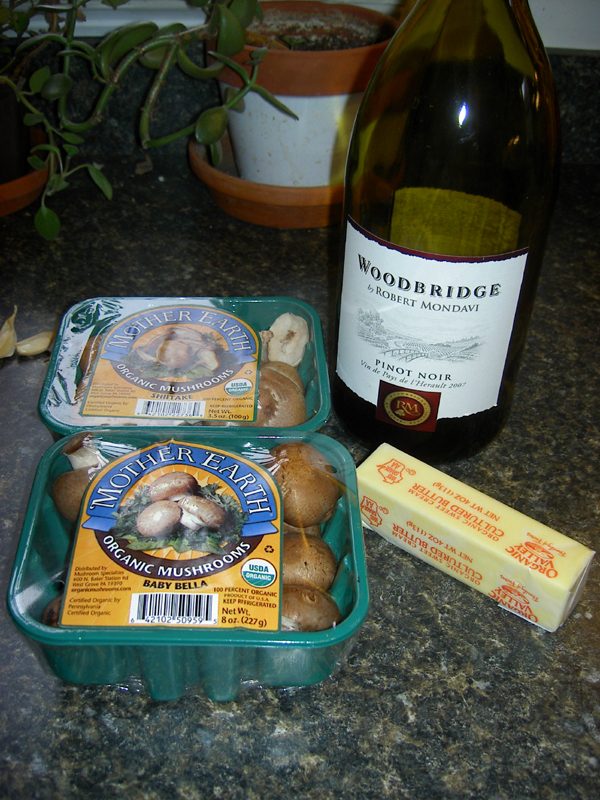
Day 2: the rest of the ingredients.

Day 2: final batch of browning meat.

Day 2: cremini and shitake mushrooms.
On day two (today) all of the actual cooking took place. Again with a baby strapped to my front, I separated the meat from the vegetables from the liquid, boiled the liquid with a couple more cups of wine, and browned all the meat in rounds before adding it to the pot. The vegetables were then sautéed over high heat and went into the pot; the mushrooms were sliced, similarly cooked, and set aside. The stew then simmered for the rest of the day, filling the house with a delicious winey meaty smell. The recipe called for the stew to simmer for 3 1/2 to 4 hours, but the meat didn’t really get tender until five hours had passed. And then, for reasons beyond our control, we didn’t eat it for another hour, by which point the meat had flaked apart and created a nice thick stewy mush. We both liked it that way, and if I repeat the recipe I will definitely plan to allow for the extra time. To go with the stew, we roasted the last of the yellow potatoes from our CSA (following last week’s successful meal, we proceeded to roast enormous amounts of potatoes and eat them with a number dinners, so we ran through the stash at a prodigious rate). Not only was the stew delicious, it allowed me to use up a number of things that were hanging around the house, notably the two types of mushrooms we received from the CSA (cremini and shitake) and the enormous bottle of pinot noir. The only thing lacking was crusty bread, and I’m going to pick some up at the farmers’ market for when we have stew again tomorrow night. If this stew is anything like every other stew, it will be even more delicious then!
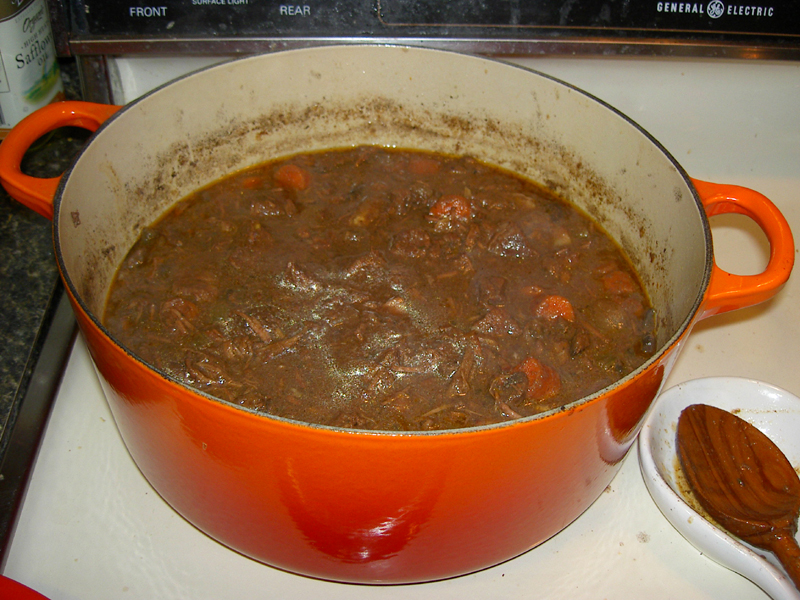
The final pot of (delicious) stew.
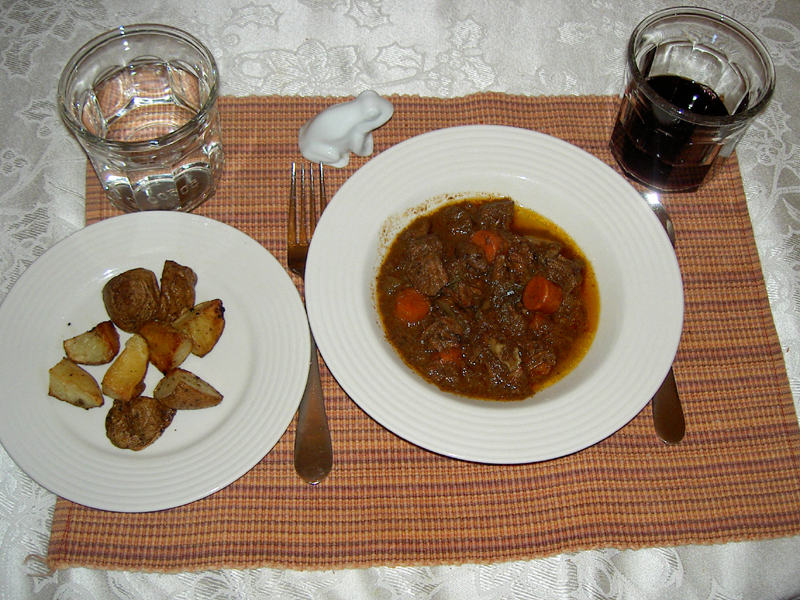
Dinner: beef stew and roasted potatoes.

